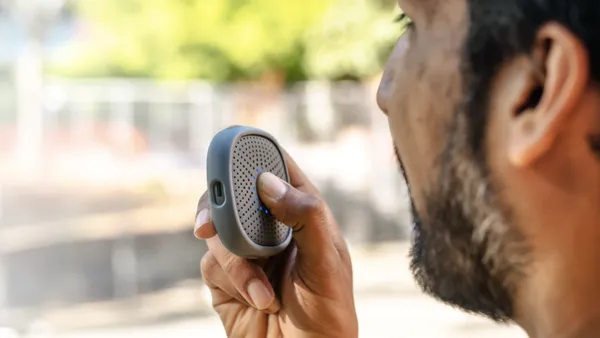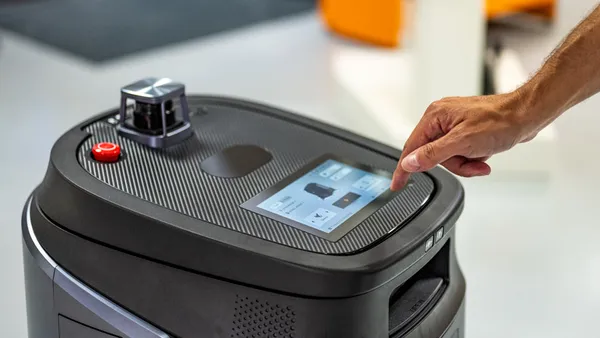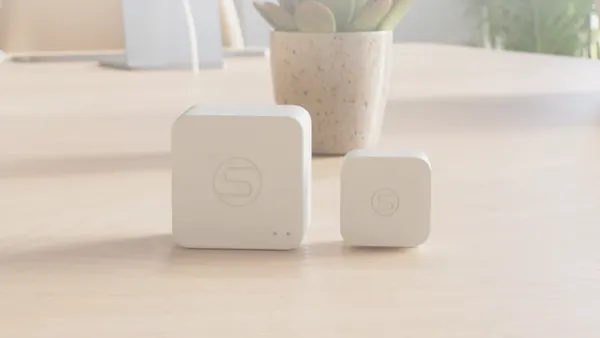Dive Brief:
- Poppy released BreatheScore Certify, the first commercially available digital air tracer particle system for buildings, according to a release shared with Facilities Dive.
- The product’s air tracer technology and certification program enables building operators, owners and tenants to comply with the recently published ASHRAE Standard 241, which sets minimum ventilation requirements to mitigate the risk of disease transmission.
- The air tracer company says BreatheScore Certify is the most accurate, cost effective and rapid way to measure a building’s delivery of clean air per occupant to reveal target occupancy levels, ventilation blindspots and areas for HVAC energy optimization.
Dive Insight:
Municipalities commonly adopt ASHRAE’s standards as part of their own codes, with Standard 241 expected to be incorporated into building codes later this year. This is prompting building owners and operators to measure the effectiveness of existing ventilation systems to plan for upcoming requirements.
“Tracer Technologies has traditionally been something that uses a lab-based approach to analyze samples of tag particles that are released into buildings,” Sam Molyneux, co-CEO of Poppy and member of ASHRAE Standard 241’s committee subgroup responsible for building commissioning and maintenance, told Facilities Dive. “Our focus has been turning it into a real-time technology that's cheap, scalable, cost effective and really modern from a digital perspective.”
“The Poppy system today is something that you can use for dollars. You can get data in real time. The data is compliant with the normative method of Appendix C [of Standard 241], and is actually best in class and reference rate data—scientific quality data that can be produced at consumer and built world price points,” he added.
Key sections of ASHRAE Standard 241-2023, Control of Infectious Aerosols, include an infection risk management mode, which identifies periods of elevated risk for disease transmission, specifications for outdoor airflow rates and filtration, air cleaning technology and performance testing requirements.
ASHRAE says adopting the standard will reduce exposure to the SARS-COV-2 virus and “other pathogens that can cause major personal and economic damage every year.” The standard, published in early July, follows the launch of the government’s National COVID-19 Preparedness Plan, which included recommendations for improving ventilation and filtration in buildings.
”We've needed a forcing function like the pandemic to squeeze that technology out of the academic literature, and force the reduction into an engineering system, a software system and make it cheap. People cared before. But, in some ways until after [Standard] 241, and until the health priority of buildings was set in a way that it was in the pandemic, there just wasn't the push that was needed to cause the effort,” Molyneux said on why it took a global pandemic to drive ventilation standards for buildings.
Poppy says the new BreatheScore Certify offering mimics human breath to assess the effectiveness of mechanical ventilation, purifiers and filters through a 20-minute test. The assessment includes regular spot checks throughout the year to help facilities leads maintain “safe and cost-efficient operations regardless of the season and occupancy rates.” The company stated that the product is now available for $149.95 per month.
Molyneux also said that in many buildings that have been tested by the product, air flow rates are greater than those required by Standard 241. “Airflow can be much higher in many cases and can be brought down under some circumstances and buildings, so there's energy and cost saving opportunities,” he noted.
The launch comes on the heels of Poppy’s new air safety program for U.S. schools in partnership with Primary.Health, which focuses on tracer-based measurements of ventilation in schools. The partnership, which began in December, intends to address growing absenteeism rates through improved indoor air safety.













